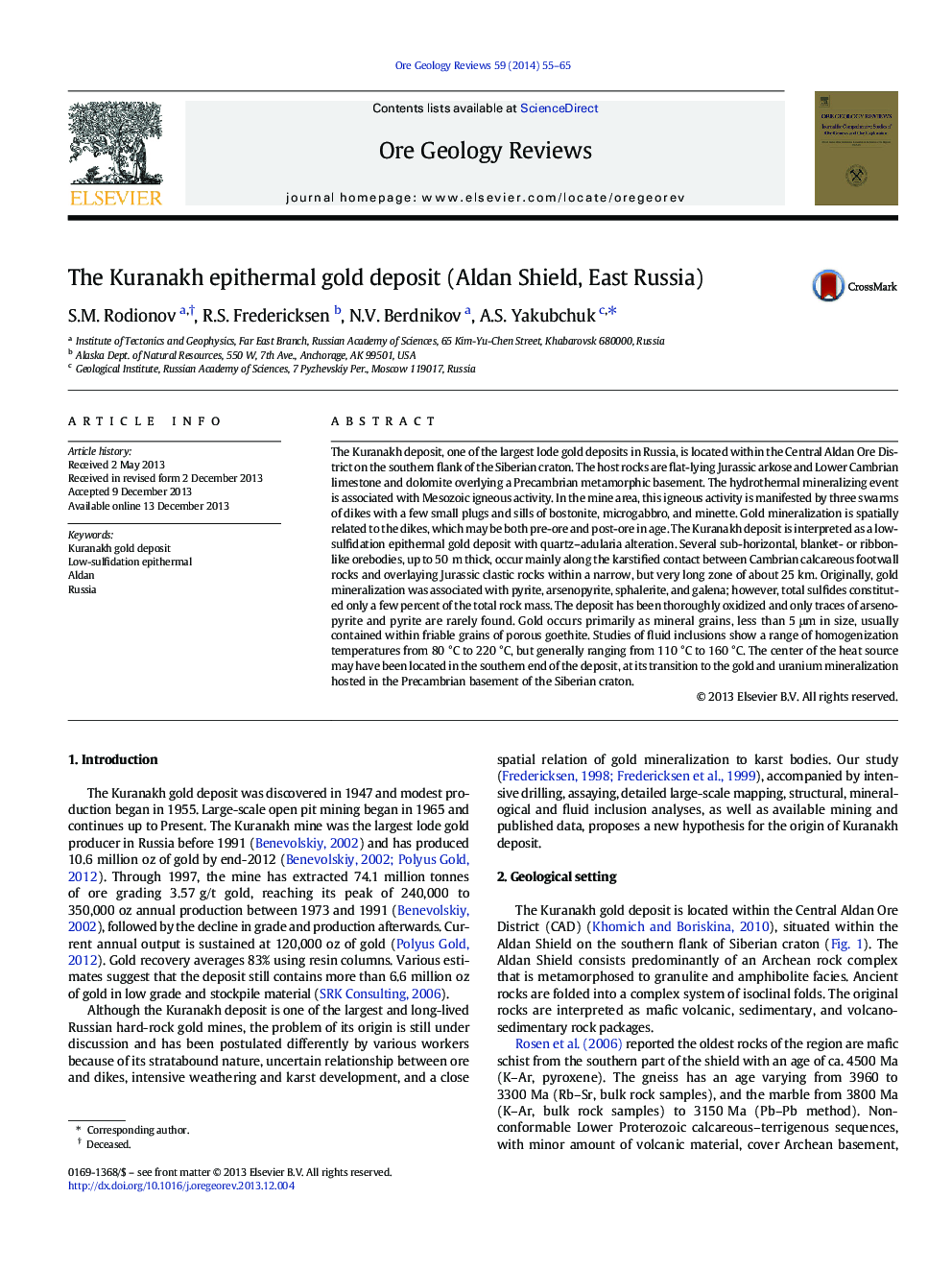| کد مقاله | کد نشریه | سال انتشار | مقاله انگلیسی | نسخه تمام متن |
|---|---|---|---|---|
| 4697479 | 1637244 | 2014 | 11 صفحه PDF | دانلود رایگان |
The Kuranakh deposit, one of the largest lode gold deposits in Russia, is located within the Central Aldan Ore District on the southern flank of the Siberian craton. The host rocks are flat-lying Jurassic arkose and Lower Cambrian limestone and dolomite overlying a Precambrian metamorphic basement. The hydrothermal mineralizing event is associated with Mesozoic igneous activity. In the mine area, this igneous activity is manifested by three swarms of dikes with a few small plugs and sills of bostonite, microgabbro, and minette. Gold mineralization is spatially related to the dikes, which may be both pre-ore and post-ore in age. The Kuranakh deposit is interpreted as a low-sulfidation epithermal gold deposit with quartz–adularia alteration. Several sub-horizontal, blanket- or ribbon-like orebodies, up to 50 m thick, occur mainly along the karstified contact between Cambrian calcareous footwall rocks and overlaying Jurassic clastic rocks within a narrow, but very long zone of about 25 km. Originally, gold mineralization was associated with pyrite, arsenopyrite, sphalerite, and galena; however, total sulfides constituted only a few percent of the total rock mass. The deposit has been thoroughly oxidized and only traces of arsenopyrite and pyrite are rarely found. Gold occurs primarily as mineral grains, less than 5 μm in size, usually contained within friable grains of porous goethite. Studies of fluid inclusions show a range of homogenization temperatures from 80 °C to 220 °C, but generally ranging from 110 °C to 160 °C. The center of the heat source may have been located in the southern end of the deposit, at its transition to the gold and uranium mineralization hosted in the Precambrian basement of the Siberian craton.
Journal: Ore Geology Reviews - Volume 59, June 2014, Pages 55–65
